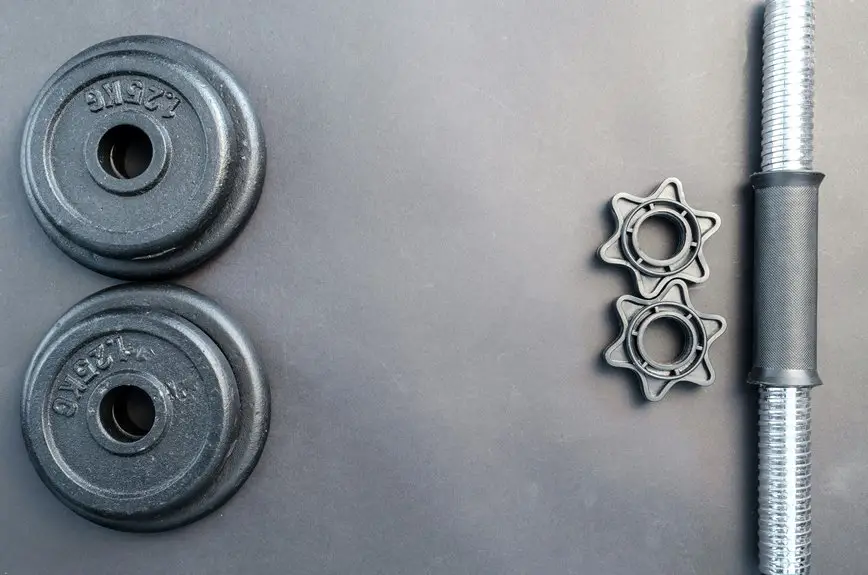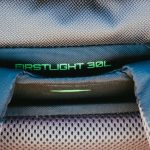When you’re maneuvering harsh outdoor conditions, the fabric you choose can make all the difference. You might be wondering which materials offer the best durability and performance. From lightweight nylon to heavy-duty canvas, each fabric has its strengths and weaknesses. Understanding these can help you make better decisions for your outdoor gear. So, what should you consider when selecting the right fabric for your specific needs? Let’s explore the options.
Table of Contents
Key Takeaways
- Nylon and Ripstop Nylon provide high durability and tear resistance, making them ideal for backpacks and tents in harsh conditions.
- Solution-Dyed Acrylic offers superior UV protection, vibrant color retention, and is lightweight, perfect for outdoor furniture and awnings.
- Canvas is extremely durable but heavy, suitable for applications needing high strength, like tarps and heavy-duty gear.
- Polyester excels in water resistance and UV protection, commonly used in outdoor gear and clothing to withstand the elements.
- Olefin is budget-friendly, dries quickly, and resists stains, making it versatile for various outdoor applications while maintaining durability.
Characteristics of Durable Outdoor Fabrics
When you’re choosing fabrics for outdoor use, durability is key. Look for materials that can withstand harsh weather conditions, like UV rays, moisture, and temperature fluctuations.
Fabrics with high tensile strength resist tearing and abrasion, which is vital when facing rough environments. Water resistance is another important characteristic; it keeps your items dry and maintains their integrity.
High tensile strength fabrics are essential for resisting tears and abrasions, ensuring durability in challenging outdoor conditions.
Additionally, consider mildew and mold resistance, as these can quickly deteriorate fabric over time. Breathability is important too; it guarantees comfort by allowing moisture to escape.
Finally, lightweight options are easier to handle and transport. By focusing on these characteristics, you’ll guarantee your outdoor fabrics can endure whatever nature throws their way while providing long-lasting performance.
Comparison of Popular Outdoor Fabrics
When choosing outdoor fabrics, you need to take into account key characteristics like durability and water resistance.
Different materials perform uniquely in various weather conditions, so it’s essential to know how they hold up.
Let’s explore some popular options and see how they stack up against each other.
Key Fabric Characteristics
Understanding the key characteristics of outdoor fabrics can greatly enhance your experience in nature, whether you’re camping, hiking, or lounging in your backyard. Here’s a quick comparison of popular outdoor fabrics that can help you make informed choices:
| Fabric Type | Durability | Water Resistance |
|---|---|---|
| Nylon | High | Moderate |
| Polyester | Moderate | High |
| Canvas | Very High | Low |
| Ripstop Nylon | High | Moderate |
Each fabric type offers different strengths. Nylon is lightweight and durable, while polyester excels in water resistance. Canvas is rugged but less water-resistant, and ripstop nylon balances durability with moderate water resistance. Choosing the right fabric can keep you comfortable and protected on your adventures.
Performance in Conditions
Choosing the right fabric isn’t just about its characteristics; it’s also about how those fabrics perform in real-world conditions.
For instance, nylon is lightweight and resistant to abrasion, making it ideal for backpacks and tents. However, it can struggle against prolonged UV exposure, leading to degradation over time.
On the other hand, polyester offers excellent UV resistance, making it a better choice for outdoor gear that faces the sun.
When it comes to extreme weather, fabrics like Gore-Tex provide waterproofing while still allowing breathability, essential for maintaining comfort.
Finally, canvas is incredibly durable but can be heavy and less water-resistant.
Understanding these performance factors will help you choose the best fabric for your outdoor adventures.
Advantages of Olefin Fabrics
When you’re considering fabrics for outdoor use, olefin offers some standout advantages.
It’s not only water-resistant but also budget-friendly, making it a practical choice for many projects.
Plus, with its versatile design options, you can easily find the perfect style to suit your needs.
Water Resistance Properties
While many fabrics struggle with moisture, olefin fabrics stand out for their impressive water resistance properties. This means you won’t have to worry about water seeping through your gear or upholstery when you’re outdoors.
Olefin’s unique molecular structure repels water effectively, allowing it to dry quickly. If you’re caught in a rainstorm or using your gear near water, you’ll appreciate how olefin keeps you dry while maintaining breathability.
It also resists stains, making it easier to clean and maintain after exposure to wet conditions. Plus, the fabric’s lightweight nature guarantees comfort without sacrificing durability.
Cost-Effectiveness and Affordability
Olefin fabrics not only excel in water resistance but also offer remarkable cost-effectiveness and affordability.
If you’re looking to outfit your outdoor gear or furniture, olefin is a smart choice. Its production costs are lower than many other fabrics, making it accessible without sacrificing quality.
You’ll find that olefin’s durability means it lasts longer, reducing the need for frequent replacements and saving you money in the long run. Its lightweight nature also means lower shipping costs, which adds to your savings.
Plus, olefin maintains its color and texture even after exposure to the sun and elements, ensuring you get the best value for your investment.
Choosing olefin is a practical decision that won’t break the bank!
Versatile Design Options
Because of its unique properties, olefin fabric offers a wide array of design options that cater to various outdoor aesthetics. You’ll appreciate the versatility in colors, patterns, and textures, allowing you to create a cohesive look for your outdoor space.
Whether you prefer bold, vibrant hues or subtle, earthy tones, olefin can deliver. Its ability to resist fading means your chosen designs will maintain their beauty over time.
Additionally, olefin’s lightweight nature makes it easy to handle and install, giving you the flexibility to adapt your outdoor furniture or accessories as needed.
With olefin, you can effortlessly blend style and functionality, ensuring your outdoor areas are both inviting and durable against the elements.
Benefits of Solution-Dyed Acrylic Fabrics
When it comes to outdoor fabrics, solution-dyed acrylic fabrics stand out for their impressive durability and vibrant colors.
Solution-dyed acrylic fabrics excel in durability and vibrant colors, making them perfect for outdoor settings.
You’ll appreciate how these fabrics resist fading, ensuring your outdoor furniture and accessories maintain their striking appearance over time. The colors are integrated into the fibers during the dyeing process, which means they won’t wash out or fade with exposure to sunlight or harsh weather.
Additionally, solution-dyed acrylics are water-resistant, making them ideal for various outdoor settings. They also provide excellent UV protection, keeping you and your belongings safe from harmful rays.
Lightweight yet robust, these fabrics are easy to clean and maintain, allowing you to enjoy your outdoor space without constant worry about wear and tear.
Durability Features of Vinyl-Coated Polyester Mesh
While solution-dyed acrylic fabrics excel in outdoor durability, vinyl-coated polyester mesh offers a unique set of durability features that make it a strong contender for outdoor applications.
This fabric combines strength with versatility, making it ideal for harsh conditions. Here are some key features you’ll appreciate:
- Tear Resistance: The mesh structure enhances its ability to withstand rips and tears.
- UV Stability: The vinyl coating protects against sun damage, ensuring long-lasting color and integrity.
- Mildew Resistance: It naturally resists mold and mildew, making it suitable for humid environments.
- Lightweight Design: Despite its durability, it remains easy to handle and install.
These features make vinyl-coated polyester mesh a reliable choice for your outdoor needs.
Weather Resistance and Maintenance
Understanding how outdoor fabrics withstand various weather conditions is essential for choosing the right material for your needs. Fabrics like nylon and polyester often excel in repelling water and resisting wind, making them ideal for unpredictable climates.
When selecting a fabric, consider its water resistance rating and breathability to guarantee comfort during varying temperatures.
Regular maintenance is key to prolonging the lifespan of your outdoor gear. Clean fabrics according to the manufacturer’s recommendations, and use protective sprays to enhance their weather resistance.
Be sure to store items in a dry place, avoiding direct sunlight to minimize deterioration. By prioritizing weather resistance and proper care, you’ll keep your outdoor fabrics in top shape, ready for any adventure.
Fade Resistance and Color Retention
Choosing outdoor fabrics that resist fading and maintain color can greatly enhance the longevity and appearance of your gear. When you invest in quality materials, you’re ensuring your outdoor equipment stays vibrant despite harsh sun exposure.
Here are four fabric options known for their fade resistance:
- Solution-Dyed Acrylic: This fabric is dyed before it’s woven, offering superior UV protection and color retention.
- Polyester: Look for high-quality polyester that’s treated to resist fading from sunlight.
- Nylon: Durable and strong, nylon often comes with UV-resistant coatings to help maintain its color.
- Treated Cotton Blends: These blends can offer breathability along with fade resistance, perfect for various outdoor activities.
Versatility in Outdoor Design
When it comes to outdoor design, you’ll love the wide array of color and pattern options available.
These choices let you match your fabric selections to any decor style you have in mind.
Plus, with functional fabric options, you can create a space that’s not just stylish but also practical for outdoor conditions.
Color and Pattern Options
As you explore durable fabrics for outdoor conditions, you’ll find that color and pattern options play an essential role in enhancing your outdoor design. The right colors and patterns not only elevate your space but also reflect your personal style.
Here are some key considerations:
- Bold Colors: Vibrant hues can create a lively atmosphere, perfect for entertaining.
- Earthy Tones: These shades blend seamlessly with nature, offering a calming effect.
- Patterns: Geometric or floral designs add visual interest, making your setup unique.
- Fade Resistance: Choose colors that resist fading to maintain their vibrancy in harsh sunlight.
Incorporating these elements into your outdoor space can transform it into a stylish yet functional retreat.
Matching Outdoor Decor Styles
How can you seamlessly blend different outdoor decor styles to create a cohesive look?
Start by choosing a color palette that ties everything together. Select a few key colors that reflect your personal taste and use them consistently across various elements like furniture, cushions, and accessories.
Mix textures and materials, but aim for harmony. For instance, pair rustic wooden furniture with sleek metal accents to create visual interest.
Additionally, incorporate plants to bridge styles; greenery can soften sharp edges and unify contrasting elements.
Finally, choose a focal point, such as a statement piece or a fire pit, to anchor the design.
Functional Fabric Choices
Blending various outdoor decor styles can be enhanced by choosing the right fabrics that not only complement your aesthetic but also withstand the elements.
Functional fabric choices can make a huge difference in both durability and versatility. Here are some top options to evaluate:
- Acrylic – Resistant to fading and mold, perfect for bright hues.
- Olefin – Known for its strength and water resistance, ideal for high-traffic areas.
- Polyester – Durable and quick-drying, great for unpredictable weather.
- Canvas – Heavy-duty and versatile, perfect for both furniture and accessories.
Eco-Friendliness of Outdoor Fabrics
While you enjoy the great outdoors, the eco-friendliness of the fabrics you choose can greatly impact the environment. Opting for sustainable materials, like organic cotton, hemp, or recycled polyester, helps reduce your carbon footprint.
These fabrics often use fewer chemicals during production, protecting surrounding ecosystems.
You might also consider brands that commit to ethical manufacturing processes, ensuring fair labor practices and minimal waste.
When selecting outdoor gear, look for certifications like Global Organic Textile Standard (GOTS) or OEKO-TEX, which indicate environmentally responsible practices.
Choosing the Right Fabric for Your Needs
When you’re gearing up for outdoor adventures, choosing the right fabric can make all the difference in comfort and performance.
Choosing the right fabric is essential for maximizing comfort and performance on your outdoor adventures.
To help you make the best choice, consider the following factors:
- Weather Resistance: Look for fabrics treated for water and wind resistance, like Gore-Tex or nylon.
- Breathability: Opt for materials that wick moisture away, such as merino wool or polyester blends, to keep you dry.
- Durability: Choose tougher fabrics like Cordura or ripstop nylon that can withstand rough conditions and wear.
- Weight: Lightweight options are ideal for backpacking, while heavier fabrics may be better for more stationary activities.
Frequently Asked Questions
How Can I Test Fabric Durability Before Purchase?
To test fabric durability before you buy, you can tug, stretch, and rub it. You’ll notice how it holds up, how it feels, and whether it frays or fades under pressure, ensuring quality.
What Is the Lifespan of Outdoor Fabrics?
The lifespan of outdoor fabrics varies, but you can generally expect between 3 to 10 years. Factors like exposure to sunlight, weather conditions, and maintenance practices will greatly influence how long they last.
Can Outdoor Fabrics Be Recycled?
While you enjoy the beauty of nature, don’t forget about sustainability. Yes, outdoor fabrics can be recycled! Many brands now offer programs that help you give your used materials a second life, reducing waste.
Are There Any Fabric Certifications for Outdoor Use?
Yes, there are fabric certifications for outdoor use, like the UV Standard 801 and Oeko-Tex. These certifications guarantee the materials meet specific durability and safety standards, giving you confidence in your outdoor gear’s performance.
How Do I Store Outdoor Fabrics During Winter?
To store outdoor fabrics during winter, clean them thoroughly, guarantee they’re dry, and fold or roll them neatly. Keep them in a cool, dry place, away from moisture and direct sunlight to prevent damage.
- The Use of Nonwovens in Construction and Civil Engineering - July 11, 2025
- The Use of Nonwovens in Construction and Civil Engineering - July 11, 2025
- The Use of Nonwovens in Construction and Civil Engineering - July 11, 2025







